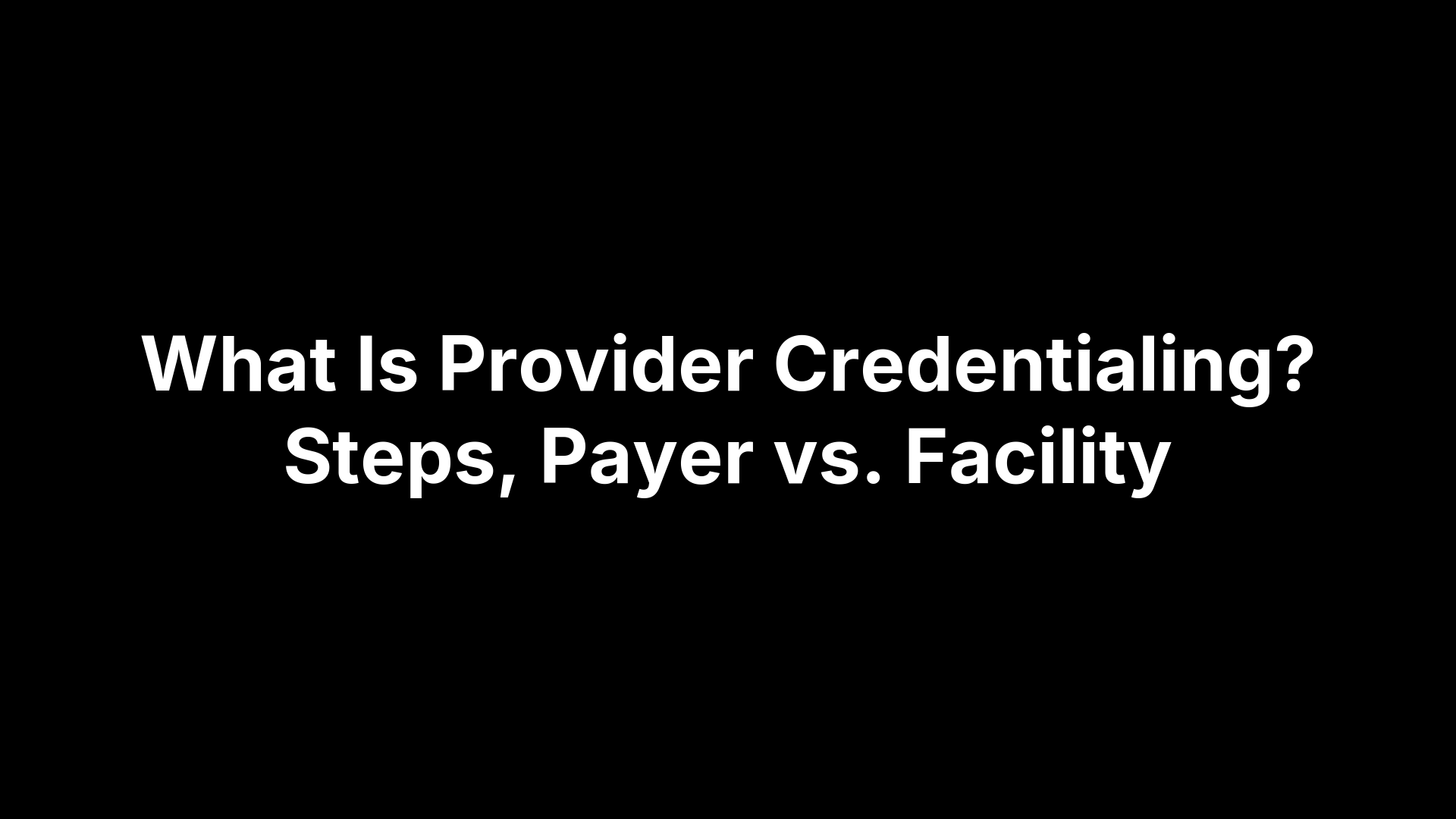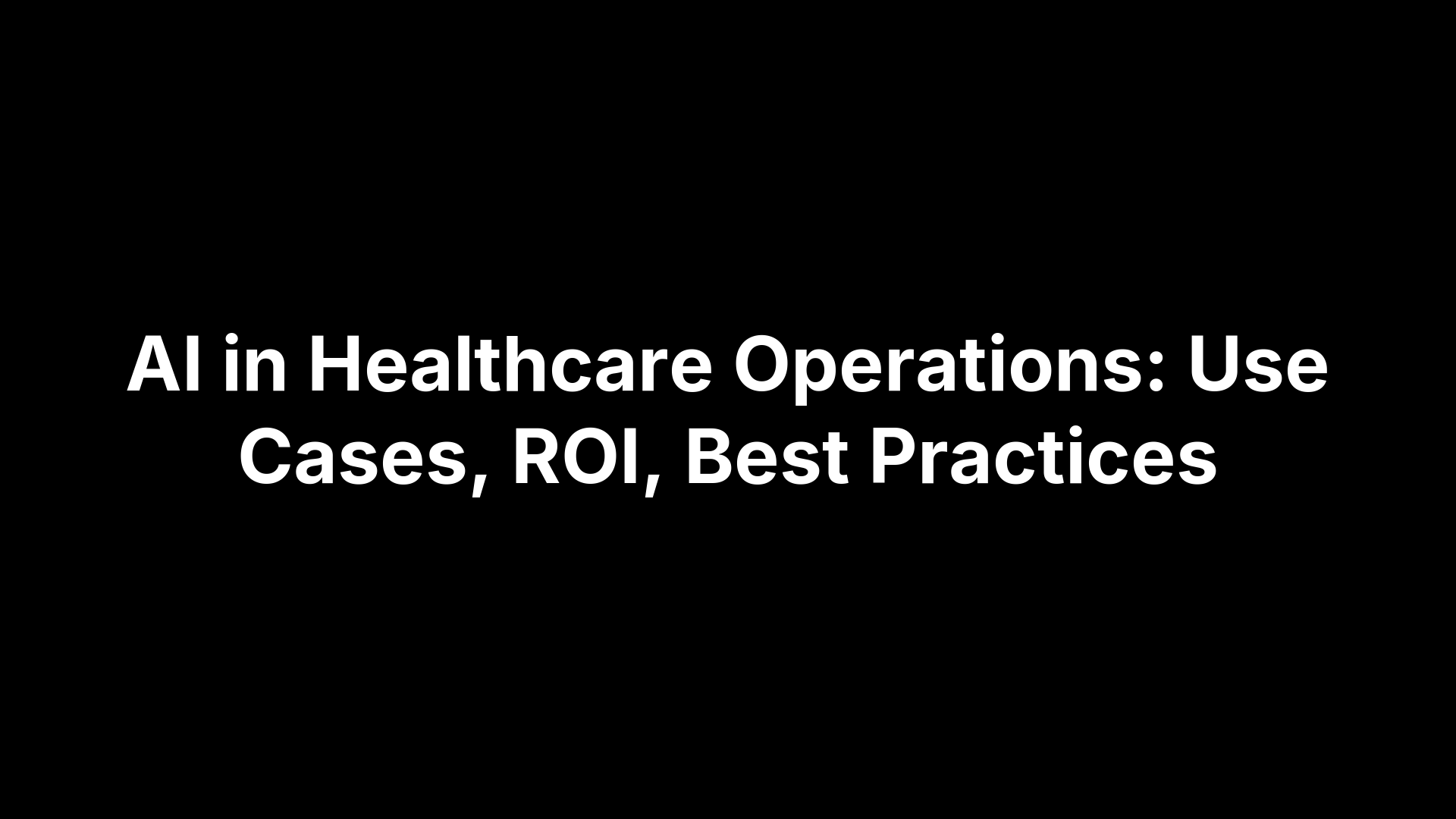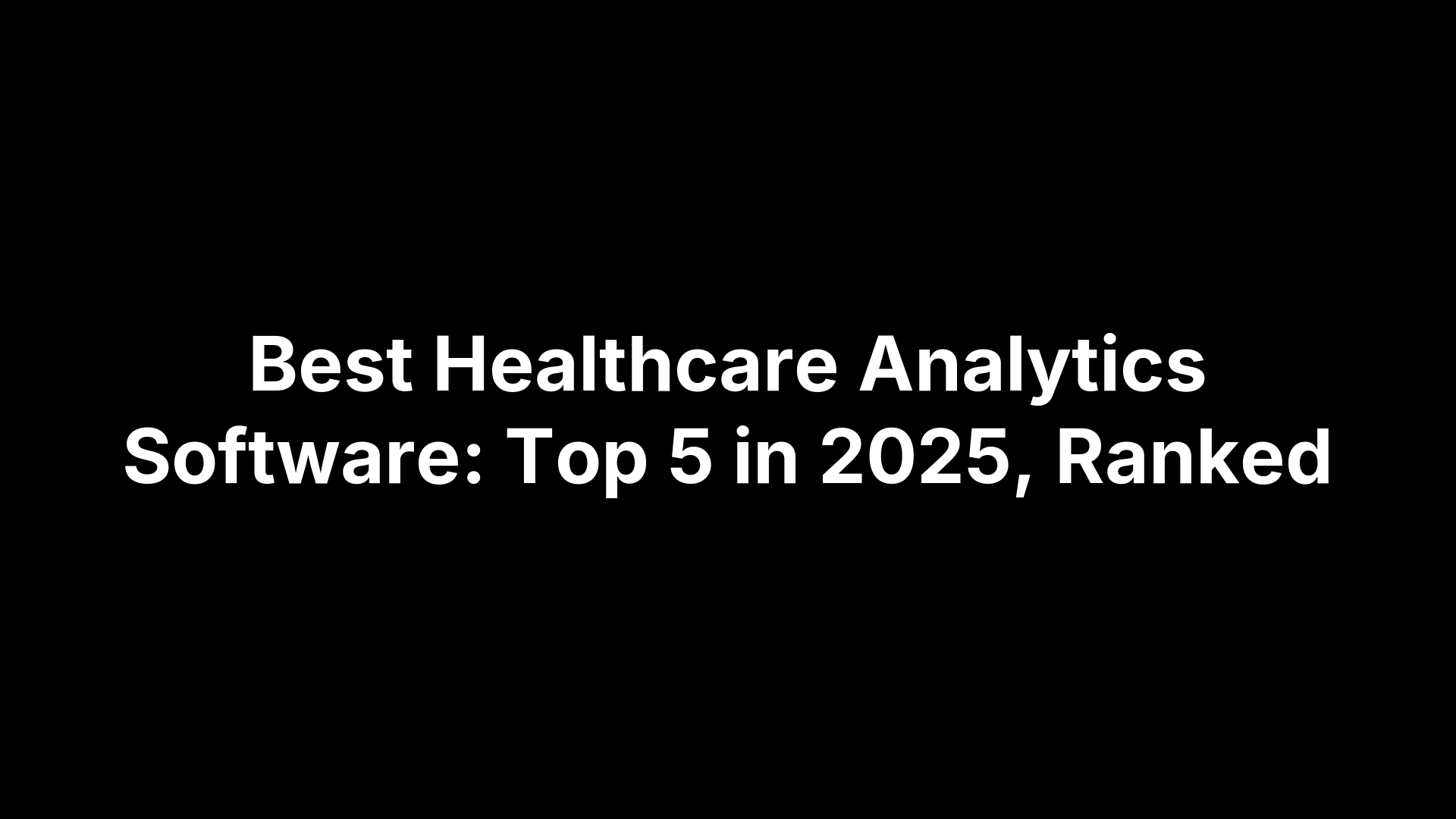Healthcare Vendor Management System: Features & Top Vendors


Healthcare Vendor Management System: Features & Top Vendors
A healthcare vendor management system (VMS) is software that centralizes and automates how hospitals and health systems work with staffing agencies. In plain terms, it’s the hub where you post requisitions, distribute them to multiple suppliers, collect candidates, verify licenses and credentials, track time and approvals, manage rate cards, and reconcile invoices—while giving leaders real-time visibility into fill rates, costs, and compliance. The result is fewer emails and phone calls, faster time‑to‑fill, standardized processes, and cleaner data to guide workforce decisions.
This guide is built for buyers comparing solutions. We’ll clarify why vendor management matters now, the outcomes you can expect, and a practical features checklist. You’ll see how a VMS differs from MSPs and internal resource pools, what to demand for security and interoperability, and how to implement with change management in mind. We’ll cover pricing models and ROI, KPIs, pitfalls to avoid, use cases by care setting, leading vendors to evaluate in 2025, how AI is changing the category, key RFP questions—and where a platform like VectorCare can complement a VMS in a broader workforce and logistics strategy.
Why vendor management matters in healthcare staffing today
Labor shortages and volatile census have pushed hospitals to rely on contingent clinicians. Managing dozens of agencies by email, calls, and spreadsheets slows fills, obscures spend, introduces compliance risk, and inflates rates. A healthcare vendor management system centralizes requisitions, enforces rate cards and credentialing, standardizes timekeeping and invoicing, and enables vendor‑neutral competition. With real‑time analytics on fill rates, time‑to‑fill, and supplier performance, leaders can course‑correct quickly—improving quality, cost control, and workforce agility without adding administrative overhead.
Benefits and outcomes you can expect from a VMS
When implemented well, a healthcare vendor management system delivers measurable operational and financial gains. It replaces scattered emails and spreadsheets with automated workflows and real‑time oversight, so leaders can fill roles faster, control labor spend, and reduce risk—without adding headcount or complexity.
- Faster time-to-fill: Automated, multi‑vendor distribution accelerates sourcing.
- Lower spend: Vendor neutrality, rate enforcement, and standardized invoicing.
- Stronger compliance: Credentialing checks and policy‑driven workflows.
- Actionable analytics: Fill rates, supplier performance, and total spend in one view.
Core features checklist for a healthcare VMS
Use this checklist to separate signal from noise. A healthcare vendor management system should centralize requisitions, automate compliance, and standardize billing while providing real-time visibility. For clinical staffing programs, prioritize capabilities that compress time-to-fill, enforce rates and credentials, and benchmark supplier performance with trustworthy reporting.
- Configurable requisitions and approvals: Tailor by facility, unit, and specialty.
- Vendor‑neutral distribution: Broadcast roles to multiple contracted suppliers.
- Credentialing and compliance: License verification, document tracking, audit trails.
- Rate cards and finance: Timekeeping, consolidated invoicing, dispute workflows.
- Analytics and dashboards: Fill rates, time‑to‑fill, spend, supplier KPIs.
- Secure access and mobility: Role‑based permissions, secure messaging, mobile app.
- Integration‑ready platform: APIs for EHR, HRIS, payroll, and applicant tracking.
- Supplier management: Performance scoring, SLAs, corrective action tracking.
VMS vs. MSP vs. IRP: how they differ and when to use each
Think of a healthcare vendor management system (VMS) as the technology, an MSP as the service layer, and an IRP as your internal labor bench. A VMS centralizes requisitions, compliance, and reporting; an MSP adds hands‑on program management, supplier stewardship, and governance; an IRP pools employed/per‑diem talent. They’re complementary and often layered: IRP first, VMS/MSP to fill remaining gaps.
- VMS: Use when managing multiple agencies to standardize rate cards/credentialing, enable vendor‑neutral competition, and gain clear visibility.
- MSP: Choose when internal bandwidth is limited and you want outsourced coordination, rate negotiation, SLAs, and change management.
- IRP: Build to stabilize core coverage and prioritize your own staff before agency to reduce premium spend.
Security, privacy, and compliance requirements
A healthcare vendor management system touches PHI, financial data, and clinician credentials—so security and compliance can’t be an afterthought. Require demonstrable HIPAA alignment, a signed BAA, and controls that protect data while proving compliance with hospital policies and regulatory expectations across credentialing, access, and reporting.
- HIPAA + BAA: Encryption in transit/at rest, HITECH-aligned safeguards, documented policies.
- Identity & access: SSO (SAML/OIDC), MFA, role-based permissions, least privilege.
- Auditability: Immutable activity logs and evidence-ready reports for internal/regulatory audits.
- Data governance: PHI minimization, retention/deletion schedules, backups, disaster recovery.
- Credentialing compliance: License verification, expirations, document tracking, policy‑driven workflows.
- Independent attestations: SOC 2 Type II or HITRUST (or equivalent) to validate controls.
Integrations and interoperability to prioritize
Interoperability decides whether your healthcare vendor management system becomes a single source of truth or another silo. Prioritize open APIs and secure file exchange so requisitions, credentials, time, and invoices sync both ways with core systems. The payoff is zero re‑keying and faster, cleaner onboarding and billing across HR, finance, and clinical operations.
- EHR/onboarding: Start/stop dates, unit, and assignment details.
- HRIS/ERP/payroll: Position control, cost centers, rate cards, invoicing.
- Credentialing/PSV: License verification, required documents, expirations.
- Background screening/immunization: Clearance statuses feeding requisitions.
- Scheduling/timekeeping/badging: Punches-to-timesheets and off‑contract hour controls.
Implementation roadmap and change management
Even the best healthcare vendor management system will stall without a crisp rollout plan. Anchor the program to measurable outcomes, stand up governance, and sequence integrations and supplier onboarding before turning on vendor‑neutral distribution. Start small, prove value quickly, and scale with clear communications and training to prevent backsliding to email, phone calls, and shadow spreadsheets.
- Charter: outcomes, governance, roles, SLAs.
- Integrations: map data, configure APIs, test.
- Suppliers: contracts, rate cards, credentialing, training.
- Pilot→scale: start small, measure, iterate; train and enforce.
Pricing models and ROI: building the business case
Budget approval hinges on a clear model and quantifiable payback. Healthcare vendor management system pricing typically falls into three buckets: supplier‑funded admin fees embedded in agency invoices, SaaS subscriptions paid by the health system, or usage‑based fees (e.g., per requisition/hour). Align the model with purchasing policy, vendor mix, and program scale.
- Lower agency rates: Vendor‑neutral competition and enforced rate cards.
- Administrative savings: Automation and consolidated invoicing reduce manual work.
- Risk reduction: Fewer compliance gaps and invoice disputes.
- Speed to fill: Faster sourcing curbs overtime and premium spend.
ROI = (Annual savings − Annual VMS cost) / Annual VMS cost
KPIs and reporting to measure success
Define success before go‑live or your healthcare vendor management system becomes just another tool. Anchor reporting to speed, cost, quality, compliance, and supplier performance, baselined against pre‑implementation. Use weekly operational views and monthly executive rollups, with drill‑downs by facility, unit, and specialty—then tie trends to actions like rate enforcement, supplier mix changes, and workflow fixes.
- Fill rate and time‑to‑fill: speed of coverage.
- Rate adherence and cost/hour: spend discipline.
- Credentialing compliance: licenses, docs, expirations.
- Invoice accuracy and disputes: billing quality.
- Supplier submit‑to‑hire and completion: funnel and retention.
Common pitfalls and how to avoid them
Most VMS misses trace back to people and process, not software. Prevent rework and backsliding by naming the risks up front and hard‑wiring controls into your rollout, then measuring adoption and outcomes from week one.
- Misaligned goals/KPIs: Baseline, set targets, report weekly.
- Eroded vendor neutrality: Standardize rates, auto‑distribute, audit exceptions.
- Shadow workflows: Disable email submissions; train; enforce in‑system only.
- Poor integrations: Connect HRIS/EHR/time/invoice before scaling.
- Credentialing gaps: Gate placements on verified docs and expirations.
Use cases by care setting and service type
A healthcare vendor management system adapts to each care setting while enforcing a unified playbook for sourcing, credentialing, and billing. These use cases cut time‑to‑fill, reduce risk, and clarify spend for HR, finance, and clinical leaders.
- Acute hospitals: travel/per‑diem RNs, respiratory, lab; auto‑distribution, rate enforcement, completion tracking.
- Ambulatory/imaging: radiology techs, sonographers; credential dashboards, schedule sync, standardized time and invoices.
- Post‑acute/home health: PT/OT, home health nurses; license verification, expirations, consolidated invoicing.
- Locum tenens/advanced practice: physicians, NPs, PAs; multi‑state license/privileging tracking and vendor‑neutral competition.
Top healthcare VMS vendors to evaluate in 2025
Here’s a representative shortlist of healthcare vendor management system providers to consider in 2025. Offerings range from technology-only platforms to MSP-backed solutions; validate integrations, vendor neutrality, reporting, and governance against your goals.
- AMN Healthcare: Workforce and vendor management to streamline operations and cut costs.
- Medefis (Health Carousel): Web-based VMS to manage contingent labor for healthcare facilities.
- BlueSky: Healthcare-specialized VMS for hospitals and long-term care.
- CareerStaff Unlimited: Customizable VMS services for scheduling, billing, and invoicing.
- TRS Healthcare (CENTRAFI): User-friendly VMS to reduce friction in staffing workflows.
How AI is reshaping VMS capabilities
AI is turning a healthcare vendor management system from a tracking tool into a proactive control tower. By learning from historical fill, rate, and quality data, modern VMS platforms predict needs, surface the right suppliers, and automate repetitive steps—compressing time‑to‑fill, tightening rate adherence, and preventing compliance slip‑ups.
- Predictive demand and vendor prioritization
- Smart matching and credential gap flags
- Automated routing, reminders, and scheduling
- Anomaly detection for rates and invoices
RFP questions and evaluation rubric
Use these RFP prompts to separate claims from capability. Anchor questions to how the VMS will cut spend, speed fills, and prove compliance in your stack. Require live demos against your workflows, sample data, and evidence-ready reports/logs.
- Vendor neutrality: rate enforcement.
- Credentialing: automation, expirations, audit trails.
- Security: HIPAA/BAA, SOC 2/HITRUST, SSO/MFA.
- Integrations: EHR, HRIS/ERP, payroll; open APIs.
- Reporting: fill rates, time‑to‑fill, cost, supplier KPIs.
Suggested weighting: Functionality 30, Security 20, Integrations 20, Services/Support 15, Commercials 10, References 5.
Where VectorCare fits in a VMS strategy
Your healthcare vendor management system governs agency staffing; VectorCare sits alongside as the patient logistics control center. It manages and enforces a contracted network of transport, home care, and DME vendors (Trust), automates dispatching, scheduling, and billing via AI agents (ADI), consolidates payments (Pay), and delivers real‑time dashboards for performance and spend (Insights). With EHR/CAD/billing integrations (Connect), customers report up to a 90% reduction in scheduling time and six‑figure annual savings while eliminating back‑and‑forth calls.
Key takeaways
The right VMS should prove three things fast: it speeds fills, controls spend, and passes compliance audits—while fitting cleanly into your stack. Lead with vendor‑neutral distribution and rate enforcement, integrate early, and track KPIs weekly to lock in ROI. To extend this discipline beyond staffing into patient logistics—transport, home care, and DME—pair your VMS with a purpose‑built platform. See how VectorCare complements your program and accelerates measurable savings.
The Future of Patient Logistics
Exploring the future of all things related to patient logistics, technology and how AI is going to re-shape the way we deliver care.



